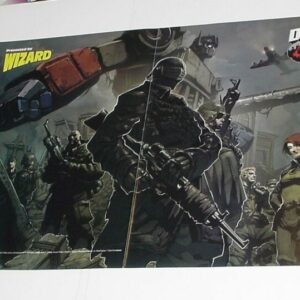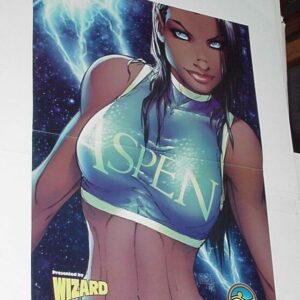Description
Alien is a 1979 science-fiction horror film directed by Ridley Scott, and starring Tom Skerritt, Sigourney Weaver, Veronica Cartwright, Harry Dean Stanton, John Hurt, Ian Holm and Yaphet Kotto. The film’s title refers to a highly aggressive extraterrestrial creature that stalks and kills the crew of a spaceship. Dan O’Bannon wrote the screenplay from a story he wrote with Ronald Shusett, drawing influence from previous works of science fiction and horror. The film was produced by Gordon Carroll, David Giler and Walter Hill through their Brandywine Productions and distributed by 20th Century Fox. Giler and Hill made revisions and additions to the script. Shusett was executive producer. The eponymous Alien and its accompanying elements were designed by Swiss surrealist artist H. R. Giger, while concept artists Ron Cobb and Chris Foss designed the human aspects of the film.
Alien received both critical acclaim and box office success, receiving an Academy Award for Best Visual Effects, Saturn Awards for Best Science Fiction Film, Best Direction for Scott, and Best Supporting Actress for Cartwright, and a Hugo Award for Best Dramatic Presentation, along with numerous other award nominations. It has remained highly praised in subsequent decades, being inducted into the National Film Registry of the Library of Congress in 2002 for historical preservation as a film which is “culturally, historically, or aesthetically significant”. In 2008, it was ranked as the seventh-best film in the science fiction genre by the American Film Institute, and as the 33rd greatest movie of all time by Empire magazine.
The success of Alien spawned a media franchise of novels, comic books, video games, and toys. It also launched Weaver’s acting career by providing her with her first lead role, and the story of her character Ripley’s encounters with the Alien creatures became the thematic thread that ran through the sequels Aliens (1986), Alien 3 (1992), and Alien Resurrection (1997).
In an unspecified year in the future, the commercial spacecraft Nostromo is on a return trip to Earth with a 7-member crew in stasis. Detecting a mysterious transmission, possibly a distress signal, from a nearby planetoid, the ship’s computer, the M.O.T.H.E.R, awakens the crew. Under prior orders from their employers, the Nostromo lands on the planetoid and Captain Dallas, Executive Officer Kane, and Navigator Lambert head out to investigate and discover the signal is coming from a derelict alien spacecraft. Inside, they find the remains of a large alien creature whose ribcage appears to have exploded from the inside.
H. R. Giger designed and worked on all of the alien aspects of the film, which he designed to appear organic and biomechanical in contrast to the industrial look of the Nostromo and its human elements. For the interior of the derelict spacecraft and egg chamber he used dried bones together with plaster to sculpt much of the scenery and elements. Veronica Cartwright described Giger’s sets as “so erotic…it’s big vaginas and penises…the whole thing is like you’re going inside of some sort of womb or whatever…it’s sort of visceral”. The set with the deceased alien creature, which the production team nicknamed the “space jockey”, proved problematic as 20th Century Fox did not want to spend the money for such an expensive set that would only be used for one scene. Ridley Scott described the set as the cockpit or driving deck of the mysterious ship, and the production team was able to convince the studio that the scene was important to impress the audience and make them aware that this was not a B movie. To save money only one wall of the set was created, and the “space jockey” sat atop a disc that could be rotated to facilitate shots from different angles in relation to the actors. Giger airbrushed the entire set and the “space jockey” by hand.
The origin of the jockey creature was not explored in the film, but Scott later theorized that it might have been the ship’s pilot, and that the ship might have been a weapons carrier capable of dropping Alien eggs onto a planet so that the Aliens could use the local lifeforms as hosts. In early versions of the script the eggs were to be located in a separate pyramid structure which would be found later by the Nostromo crew and would contain statues and hieroglyphs depicting the Alien reproductive cycle, offering a contrast of the human, Alien, and space jockey cultures. Cobb, Foss, and Giger each created concept artwork for these sequences, but they were eventually discarded due to budgetary concerns and the need to trim the length of the film. Instead the egg chamber was set inside the derelict ship and was filmed on the same set as the space jockey scene; the entire disc piece supporting the jockey and its chair were removed and the set was redressed to create the egg chamber. Light effects in the egg chamber were created by lasers borrowed from English rock band The Who. The band was testing the lasers for use in their stage show in the sound stage next door.
Frame is shrinkwrapped until time of purchase. Ships boxed with packing peanuts.
THE PERFECT GIFT!
Related products
-


Hellboy vs Wolverine Poster John Cassaday
$39.99 Add to cart -


Transformers G.I. Joe Poster Pat Lee GI Optimus Prime Snake Eyes
$39.99 Add to cart -


Fathom Poster # 9 Aspen Shirt Michael Turner Matthews Superman
$39.99 Add to cart -


CrossGen Poster #18 Arwyn Greg Land Sojourn Bow of Ayden
$29.99 Add to cart





